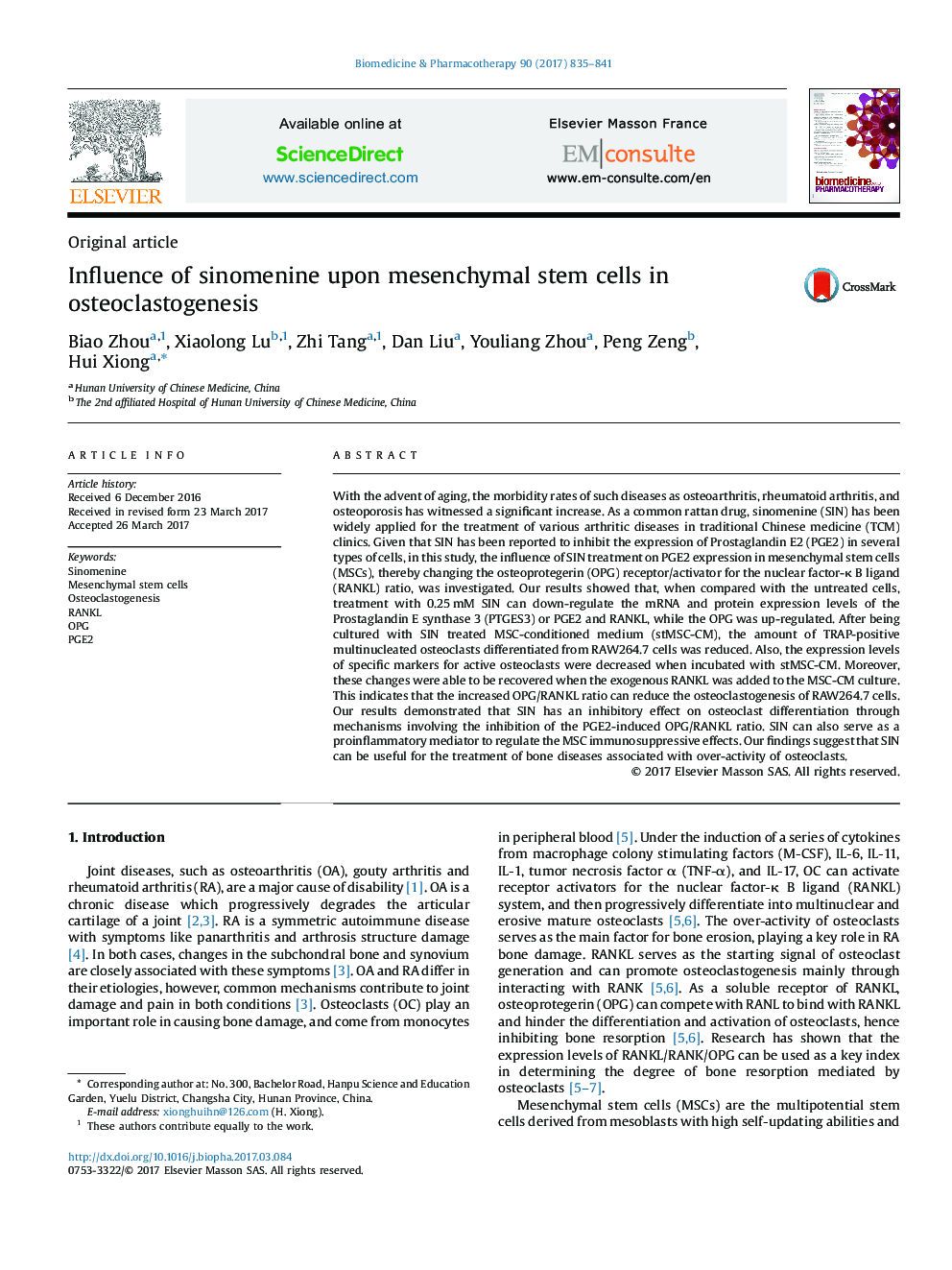| Article ID | Journal | Published Year | Pages | File Type |
|---|---|---|---|---|
| 5553098 | Biomedicine & Pharmacotherapy | 2017 | 7 Pages |
With the advent of aging, the morbidity rates of such diseases as osteoarthritis, rheumatoid arthritis, and osteoporosis has witnessed a significant increase. As a common rattan drug, sinomenine (SIN) has been widely applied for the treatment of various arthritic diseases in traditional Chinese medicine (TCM) clinics. Given that SIN has been reported to inhibit the expression of Prostaglandin E2 (PGE2) in several types of cells, in this study, the influence of SIN treatment on PGE2 expression in mesenchymal stem cells (MSCs), thereby changing the osteoprotegerin (OPG) receptor/activator for the nuclear factor-κ B ligand (RANKL) ratio, was investigated. Our results showed that, when compared with the untreated cells, treatment with 0.25 mM SIN can down-regulate the mRNA and protein expression levels of the Prostaglandin E synthase 3 (PTGES3) or PGE2 and RANKL, while the OPG was up-regulated. After being cultured with SIN treated MSC-conditioned medium (stMSC-CM), the amount of TRAP-positive multinucleated osteoclasts differentiated from RAW264.7 cells was reduced. Also, the expression levels of specific markers for active osteoclasts were decreased when incubated with stMSC-CM. Moreover, these changes were able to be recovered when the exogenous RANKL was added to the MSC-CM culture. This indicates that the increased OPG/RANKL ratio can reduce the osteoclastogenesis of RAW264.7 cells. Our results demonstrated that SIN has an inhibitory effect on osteoclast differentiation through mechanisms involving the inhibition of the PGE2-induced OPG/RANKL ratio. SIN can also serve as a proinflammatory mediator to regulate the MSC immunosuppressive effects. Our findings suggest that SIN can be useful for the treatment of bone diseases associated with over-activity of osteoclasts.
